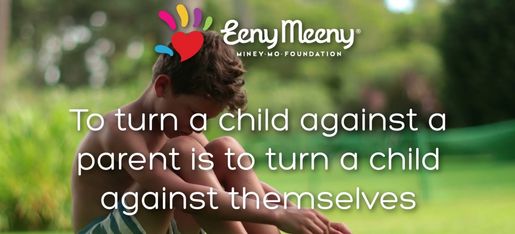Signed in as:
filler@godaddy.com
Signed in as:
filler@godaddy.com
Thank you for visiting. The content previously focused on this page labelled "Parental Alienation" has been updated and moved to a new page titled "Survival-Based Rejection: Parent-Child Trauma-Coerced Attachment, and Alienation." We believe this term better reflects the complexities and dynamics of the issue.
Parental Alienation is best understood as an outcome-based label used to describe a child’s rejection of a parent that reflects adaptive responses to sustained relational pressure and conditional attachment safety, and exposure to coercive, fear-based, or manipulative relational dynamics.
Comprehensive Description of the Phenomenon
Parental Alienation (PA) is a term that primarily focuses on the alienation aspect, often perceived as the child's rejection of one parent, usually due to the influence of the other parent. While this highlights a significant issue, it may be too narrow to encompass the broader range of dynamics and experiences involved. The term Parent-Child Trauma-Coerced Attachment and Alienation (PCTCAA) provides a more comprehensive description, acknowledging the traumatic and coercive elements that contribute to attachment issues and subsequent alienation.
Recognition of Trauma and Coercion
Using the term PCTCAA emphasises the traumatic experiences and coercive behaviours that underpin dysfunctional attachment and alienation. This acknowledges the psychological manipulation and emotional abuse that often occur in these situations, making it clear that the issue is not merely about a child's preference but involves significant psychological harm and coercion.
Holistic Understanding of Attachment Issues
PCTCAA highlights that the problem involves complex attachment issues, not just alienation. It draws attention to how coercive behaviours can distort a child’s attachment bonds with both parents, affecting their emotional and psychological well-being. This term better captures the multifaceted nature of the problem, where the child's attachment system is being manipulated, leading to trauma and alienation.
Alignment with Psychological and Clinical Frameworks
The term PCTCAA aligns more closely with contemporary psychological and clinical frameworks that understand family dynamics through the lenses of trauma and attachment theory. It facilitates a more nuanced approach to diagnosis and treatment, encouraging practitioners to consider the underlying trauma and attachment disruptions rather than focusing solely on surface-level alienation.
Reducing Stigma and Misunderstanding
The term Parental Alienation can sometimes carry a stigma, suggesting that the alienated parent is solely a victim and the alienating parent solely a perpetrator, potentially oversimplifying the situation. PCTCAA reduces this dichotomy by presenting the issue as a complex interplay of trauma and coercion affecting the entire family system. This can lead to a more empathetic and balanced understanding, reducing blame and fostering more effective therapeutic interventions.
Enhancing Legal and Policy Frameworks
Incorporating the concepts of trauma and coercion into the terminology can improve legal and policy frameworks by providing more precise language that captures the gravity of the issue. This can lead to better-informed decisions in family law and child custody cases, ensuring that interventions address the root causes rather than just the symptoms of the problem.
Conclusion
Changing the term from Parental Alienation to Parent-Child Trauma-Coerced Attachment and Alienation broadens the understanding and discourse around the issue. It emphasises the traumatic and coercive aspects of the phenomenon, aligns with modern psychological theories, and promotes a holistic, empathetic approach to treatment and legal considerations. This shift in terminology can lead to more accurate diagnoses, effective interventions and supportive policies that address the complexities of parent-child dynamics in cases of coercive attachment and alienation.
Key search phrases:
Parental Alienation is Child Abuse and Family Violence
Parental Alienation Australia
Parental Alienation Expert
Parental Alienation
Parental Alienating Behaviours
Brainwashing Children
Coercive Control of Children
Enmeshment
Parental Alienation Therapy
Reunification Therapy
Alienated Child
Alienated Parent
Why is my child rejecting me

Parental Alienating Behaviours
are Child Abuse & Family Violence.
This serious form of abuse and family violence can no longer be ignored. Parental alienating behaviours must be acknowledged in Australia as it is in other parts of the world. We need legislation that not only acknowledges its existence but firmly and clearly legislates against it.